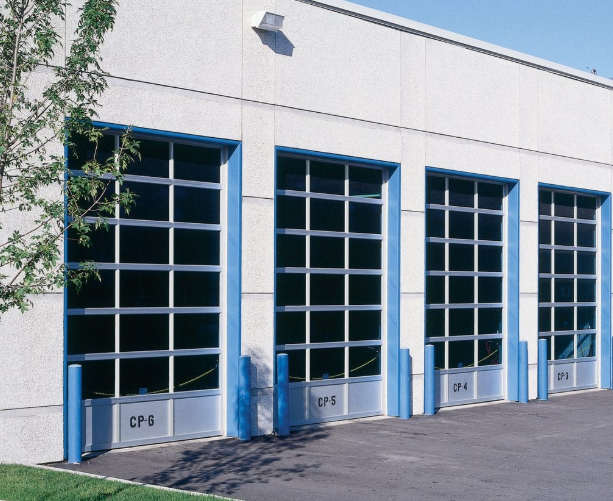Whether you operate a warehouse, service centre, manufacturing facility, or retail business, commercial overhead doors are a crucial investment. They provide security, efficiency, climate control, and ease of access for both people and equipment. However, choosing the right door involves more than picking one that fits the opening.
This buying guide will walk you through everything you need to consider before purchasing a commercial overhead door—from types and materials to safety, insulation, and maintenance.
1. Understand Your Needs
Before diving into product specs, evaluate the nature of your business and how the overhead doors will be used.
- Frequency of Use: Will the door be opened dozens of times a day or only occasionally? High-traffic areas need durable, fast-opening doors.
- Security Requirements: What are the risks of theft or unauthorised access?
- Environmental Factors: Is your facility climate-controlled? Are you in a region with extreme weather?
- Clearance & Space: Overhead doors need room above or beside the opening for tracks. Make sure the ceiling height and surrounding space allow for installation.
2. Types of Commercial Overhead Doors
There are several types of overhead doors, each suited for different applications:
a. Sectional Doors
These doors are made up of horizontal panels that slide upward and rest along the ceiling. Sectional doors are commonly used in warehouses and loading docks due to their insulation and durability.
Best for: Warehouses, manufacturing, distribution centres.
b. Roll-Up Doors
Also called rolling steel doors, these roll into a coil above the opening. They’re compact, durable, and ideal for tight spaces.
Best for: Industrial facilities, storage units, service stations.
c. High-Speed Doors
Designed for facilities with frequent opening and closing, these doors open and close quickly, minimising energy loss and boosting efficiency.
Best for: Cold storage, food processing, and clean rooms.
d. Fire-Rated Doors
These offer a fire-resistant barrier and are often required in buildings to meet fire safety codes.
Best for: Parking garages, factories, and buildings with high fire risk.
3. Material Matters
The material of your overhead door affects everything from durability to insulation and appearance.
- Steel: Strong, secure, and low-maintenance. Ideal for high-security or heavy-duty applications.
- Aluminium: Lightweight and corrosion-resistant. Often used in service stations or car dealerships.
- Glass: Aesthetic and allows natural light. Best for retail showrooms or auto shops.
- Insulated Doors: Often made with foam-filled steel or aluminium panels, ideal for energy efficiency and temperature-sensitive environments.
4. Insulation & Energy Efficiency
If your building is heated or cooled, an insulated overhead door is worth the investment. Look for doors with a high R-value, which measures thermal resistance. Insulated doors reduce energy costs, control interior climate, and improve soundproofing.
5. Safety & Security Features
Security is a top concern in commercial settings. Consider these safety features:
- Tamper-resistant locks and hardware
- Remote monitoring and smart controls
- Safety sensors and auto-reverse systems
- Wind-load rated doors (important in hurricane-prone areas)
Many doors can be integrated with access control systems or automated building management systems for added security and convenience.
6. Maintenance and Durability
Look for doors with minimal maintenance requirements and long-lasting components. Some features to look for:
- Powder-coated or galvanised finishes to resist corrosion
- Heavy-duty springs with high cycle ratings
- Easily replaceable panels or slats
- Lubricated or sealed bearings for smoother operation
Regular maintenance is key to extending door life, so consider partnering with a vendor that offers service plans or warranties.
7. Customisation Options
Most commercial doors can be customised in terms of:
- Colour and finish
- Windows and vision panels
- Operating mechanisms (manual, chain hoist, electric motor)
- Branding or signage integration
Customisation ensures the door not only functions well but also aligns with your facility’s aesthetics and operational needs.
8. Cost Considerations
Commercial overhead doors vary widely in price depending on type, size, material, and features. While budget is always important, consider the total cost of ownership:
- Initial purchase and installation
- Energy savings from insulation
- Maintenance costs
- Lifespan and durability
Cheap doors may save money upfront but cost more in repairs and energy loss over time.
9. Choosing the Right Vendor
When buying commercial overhead doors, work with a reputable dealer or installer who can:
- Offer a wide product selection
- Provide clear warranties
- Handle installation and permitting
- Offer ongoing service and support
Always check customer reviews, ask for references, and confirm the vendor is licensed and insured.
Final Thoughts
A commercial overhead door is a long-term investment in your business’s efficiency, security, and appearance. By carefully considering your needs, choosing the right type of door, and working with a trusted supplier, you can ensure a smooth installation and reliable performance for years to come.
If you’re unsure where to start, consult a commercial door specialist—they can assess your site and recommend the best solution tailored to your operations.

